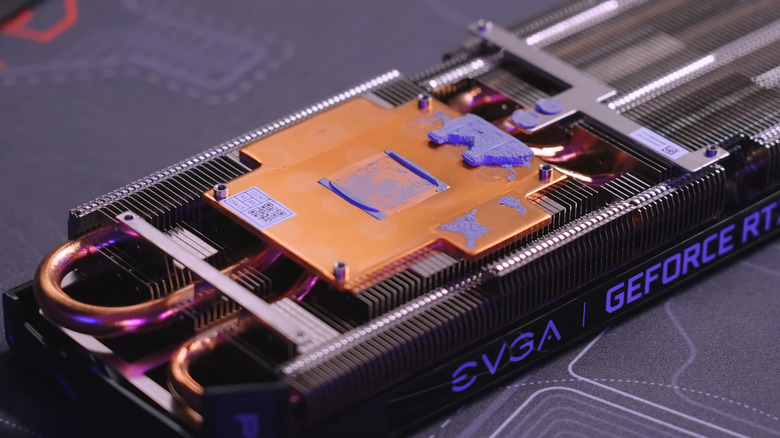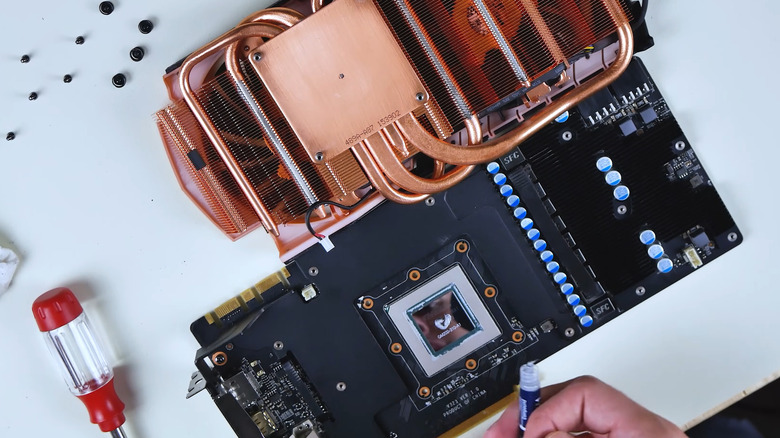Do Graphics Cards Use Thermal Paste, And Do You Need To Change It?
The GPU is one of the most important components of your PC that works hard when you're gaming, editing videos, or doing anything that requires intensive graphics power. As the GPU processes data and consumes energy, it naturally produces heat. Even when it's idle, its temperature ranges from 30 to 45 degrees Celsius. This can climb to between 65 to 85 degrees Celsius when you're gaming. All that heat, of course, isn't great for your system. That's where the thermal paste, GPU fans, and other cooling solutions come in to help keep the GPU's temperature under control.
Thermal paste improves heat transfer between your GPU and heatsink by filling in the tiny gaps that would otherwise trap air pockets. Over time, though, the paste can dry out due to repeated heating and cooling, which reduces its effectiveness. How often you should change the thermal paste depends mostly on how heavily you use your system, but in most cases, it should hold up just fine for 3 to 5 years. So, unless you're planning to use the GPU well beyond that or bought it second-hand, you probably won't need to replace the paste.
When thermal paste starts to wear out, your GPU may run hotter, fans may become louder, and performance can take a hit. In such cases, reapplying the thermal paste can help improve cooling and even extend the lifespan of your graphics card.
Applying the thermal paste to GPU
Replacing thermal paste can definitely make a difference, but it requires taking the graphics card apart. That means you'll need some technical know-how, and it will probably void your warranty. It's also important to choose a high-quality thermal paste so it transfers heat efficiently and lasts longer. That way, you won't need to replace it as often.
After you've disassembled the GPU, the next step is to remove the old thermal paste from both the GPU chip and the heatsink. You can use a bit of isopropyl alcohol and a microfiber cloth to wipe it away gently. Once it's clean, it's time to apply the new thermal paste. Make sure you use the right amount of thermal paste so it covers the surface evenly without spilling over the edges. The exact amount depends on the size of the GPU die. For instance, if the surface is 15mm by 10mm, about 0.1 milliliters of thermal paste should do the trick. An effective method is to apply a small, pea-sized dot in the center. This way, when you reattach the heatsink, the pressure will force the paste to spread evenly across the surface.
Once you've applied the thermal paste, simply reassemble everything and monitor the GPU temperature. It's a good idea to run a GPU stress test using a tool like FurMark to ensure there's no overheating. If everything stays cool, you'll know the thermal paste was applied correctly.

